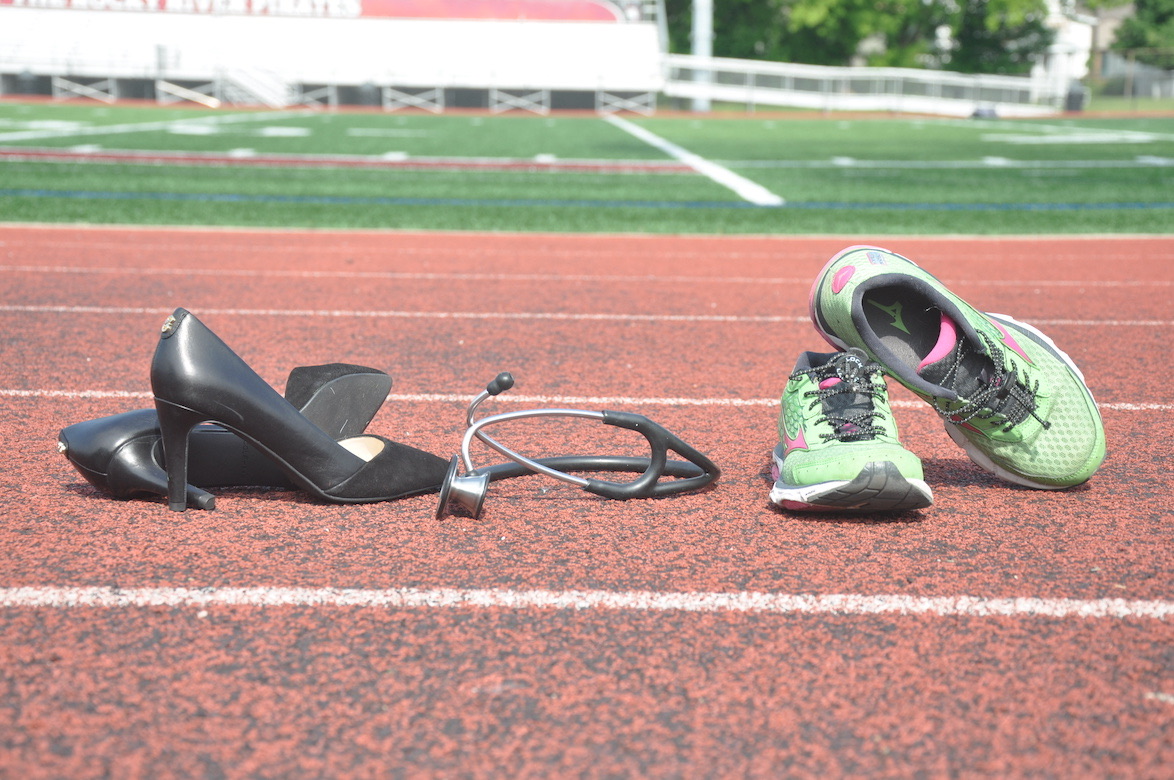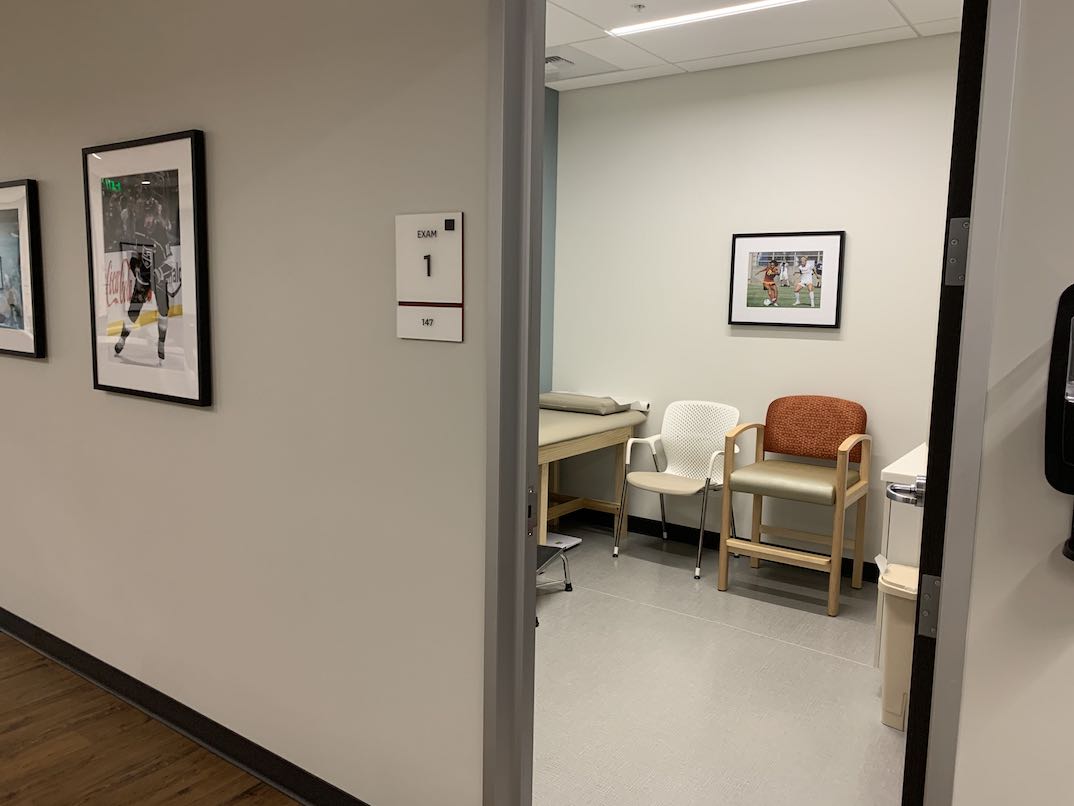The ankle sprain… One of the most common reasons patients see me in the office. Here is all the information you need to know if this happens to you. It will be just like if you were visiting me in the office!
An ankle sprain occurs when your foot rolls in or out putting extra stress on the ligaments. This causes the ligaments to stretch/tear, which is by definition an ankle sprain. If your ankle rolls where sole is facing in, it is called an inversion injury (most common). If your ankle rolls where with your sole facing out, it is an eversion injury. These injuries can happen during sports, basketball and volleyball are common, or in any setting when athletes can land awkwardly from any jump or step. Sometimes though for the unlucky patient the injury can occur during day-to-day activities, something as simple as stepping off a curb wrong at the grocery store. I have seen all of the above (and more) in my office!
During the sprain, the ligaments are stretched/torn which causes pain and swelling. The great news is these ligaments are not typically the type we need to fix with surgery, and most people heal quickly without long-term problems. However, more complex types of sprains do exist that take longer to heal or may need more intervention. For example, a “high ankle” sprain results from a more forceful twist that injures the ligaments above the ankle between the lower leg bones in an area called the syndesmosis. With other high energy injuries, you can also injure ligaments lower down in the foot or even break the bones. If you are a kid and still growing, your growth plates are weaker than the ligaments. Because of this when you twist your ankle, the bones may be more likely to break than for a ligament to tear. This is a commonly missed injury by non-orthopedic physicians, can take longer to heal, and needs a correct diagnosis to be treated properly.
Today we focus on the essential adult ankle sprain, the inversion (sole of foot turning in) injury that tears ligaments mainly on the outside part of the ankle. The most common injured ligament is called the ATFL, or anterior talofibular ligament. If you look at your right foot it is that approximately at the 2 o’clock position on the top of your foot about 1 cm from the ankle joint.
The injury causes a tear/stretch of this ligament resulting in pain, swelling, and bruising.
Treatment is usually very straightforward. I recommend starting with ice for the first 24-48 hours with rest (doing as little as possible) and elevation (at or above the level of the heart) for swelling. You should only do light activities that do not increase pain. If you have a more significant injury and you cannot walk normally, sometimes I recommend using a brace or other support device like a medical grade boot short term.
The timeline for recovery is variable and depends on how bad the injury is and what your goals for return to activity are. If you have a small injury and are doing low impact movements (sitting/walking) a full recovery is quicker than if you have a larger injury and play sports that require cutting, jumping, or pivoting.
The biggest risk with an ankle sprain is repeat injury. Once the ligaments are injured, your ankle is more unstable and weaker. You are more likely to sprain it again or injure it further if you have not fully regained all your strength, balance, and coordination lost with the initial injury. Your body normally controls ankle stability (balance and strength) with proprioception. Proprioception is a protective sensation where your brain sends a signal to a joint and the joint responds with position updates. Think of it like you brain asking your ankle, “Hey, how’s it going down there, which way are you pointing, how stable is that ground?” And your ankle responds, “I am okay, pointing straight ahead, ground stable no cause for concern.” This happens constantly and nearly instantaneously with movement. Consider this – don’t you always know where your ankle is without even having to think about it? When you have an injury that feedback communication does not work as well. The ankle’s response can be slowed and inaccurate. This causes an increased risk of a second injury.
We can improve the ankle’s ability to communicate via proprioception, as well as its strength and our balance with physical therapy. A physical therapist can assess how the ankle is moving and what needs to happen to retrain it to be pain free and moving well. In my office I see people with the initial injury and then depending on the degree of injury will either send them straight to physical therapy or will send after a period of rest. It takes several weeks to get the ankle back to moving normally, but most often after doing so people do very well.
One common question I get is why the swelling lasts so long after the injury, even if they are progressing well otherwise. This is usually not cause for concern. In addition to injuring the ankle ligaments the other soft tissues around the ankle were injured. Because of this, swelling can persist for many months even after your ankle feels better. Another common question is why the ankle feels stiff or not quite like the other ankle. The stiffness is from the lack of movement in the early recovery and from scar tissue that forms during healing. The great news as that the stiffness dramatically with time and work with physical therapy.
My goal with treating an ankle sprain is to get patients safely back to all the activities they love as soon as possible. At my initial evaluation we make a plan for what one should expect in the next few days to week and schedule a follow up to assess progress. Having two visits helps me understand your trajectory for healing – two data points helps me see the line of how quickly you are progressing much better than single point. Once physical therapy is started, I continue to monitor progress and help determine when one can return to sport activities.
A final word on return to sport. I return most people cautiously. As I mentioned, recurrent injuries happen. I unfortunately see patients that have long term chronic ankle pain or instability due to having multiple sprains. This is a harder problem to fix and may even require surgery. Getting the physical therapy right from the first injury can help prevent this problem. For those with recurrent sprains, optimizing a physical therapy program and integrating ankle rehab into your exercise will absolutely be helpful and may also prevent the above.
Any questions about ankle sprains? Let me know! Share this with anyone you know that may find this useful.



